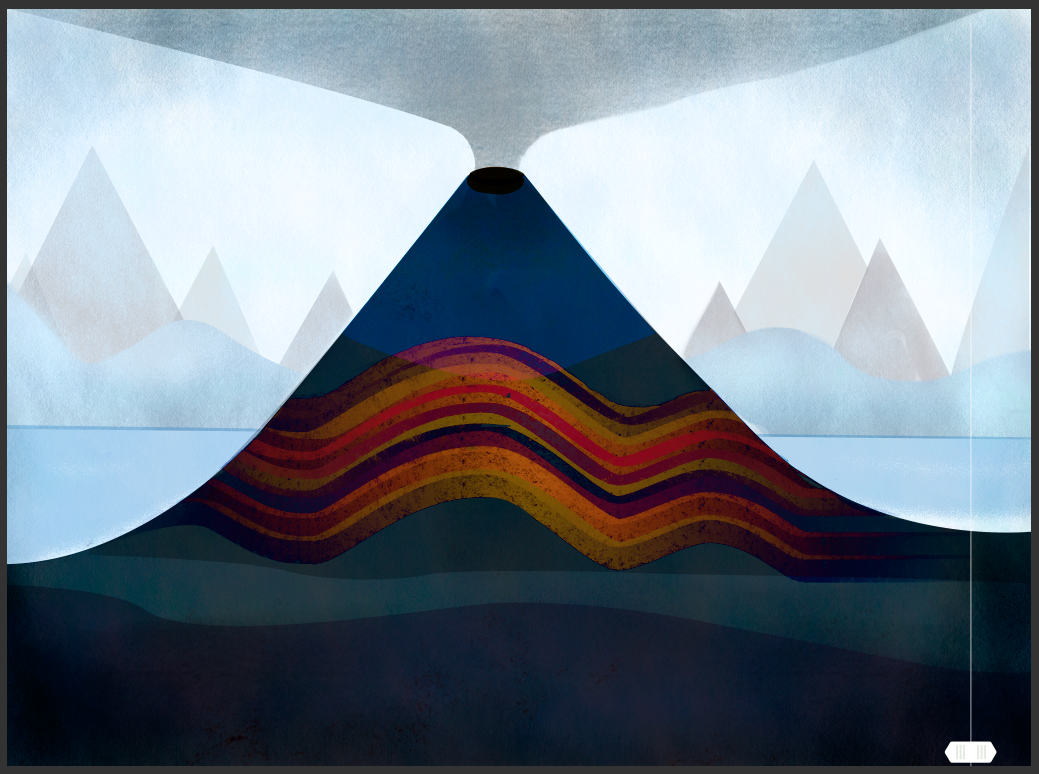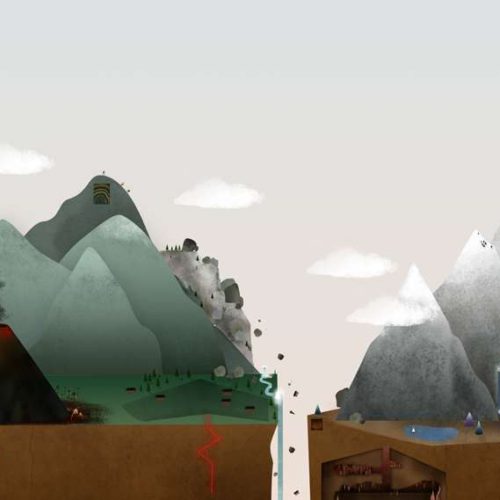Explore the Earth: a little more about volcanoes

Illustration by Sarah Jacoby
As we dug into all of the incredible ways our planet changes over time for our newest app, The Earth, we became particularly interested in volcanoes. The more we learned, the more we wanted to know. Some of what we uncovered made it into the app and handbook. Here are a few things we (reluctantly!) had to leave out:
Volcanoes are creating new islands right now.
You can read about the newest ones in the news. The volcano Hunga Tonga recently formed an island only a handful of people have explored. Japan’s young “Snoopy” island formed in 2013. Wikipedia has a list of islands formed in the last hundred years. And you can look many new islands up on Google Earth, but be quick! Some volcanic islands disappear after only a few months or years.
Volcanoes grow faster than you might think.
Take Parícutin, for example, one of the world’s youngest. This cinder cone volcano rose from a farmer’s cornfield practically overnight in Mexico, in 1943. Scientists flocked from around the world to witness Parícutin grow. After nine years, Parícutin ceased to erupt. Now dormant, it is the first volcano documented from start to finish by modern science. This student’s amazing science project shows how a cinder cone volcano forms compared to other volcanoes.
Volcanic eruptions can produce dramatic lightning displays.
What causes them? Scientists aren’t entirely sure, but they are think it involves charge separation within the volcano’s ash cloud. Though these “dirty thunderstorms” can be rare, one volcano in Japan frequently generates lightning. An intrepid photographer captured great photos. For a safer way to witness lightning, make tiny lightning sparks at home.
Volcanoes can be hidden.
The majority of Earth’s volcanoes are underwater, and scientists discover new ones all of the time. Some of these, like the ones discovered off of Australia’s coast, are dormant. Others, like the one just found off the coast of Alaska, are still active. You can study the way lava and ash rise above an underwater volcano by making your own model.
